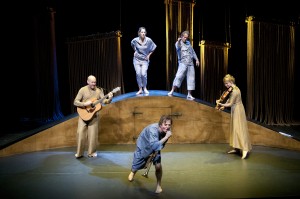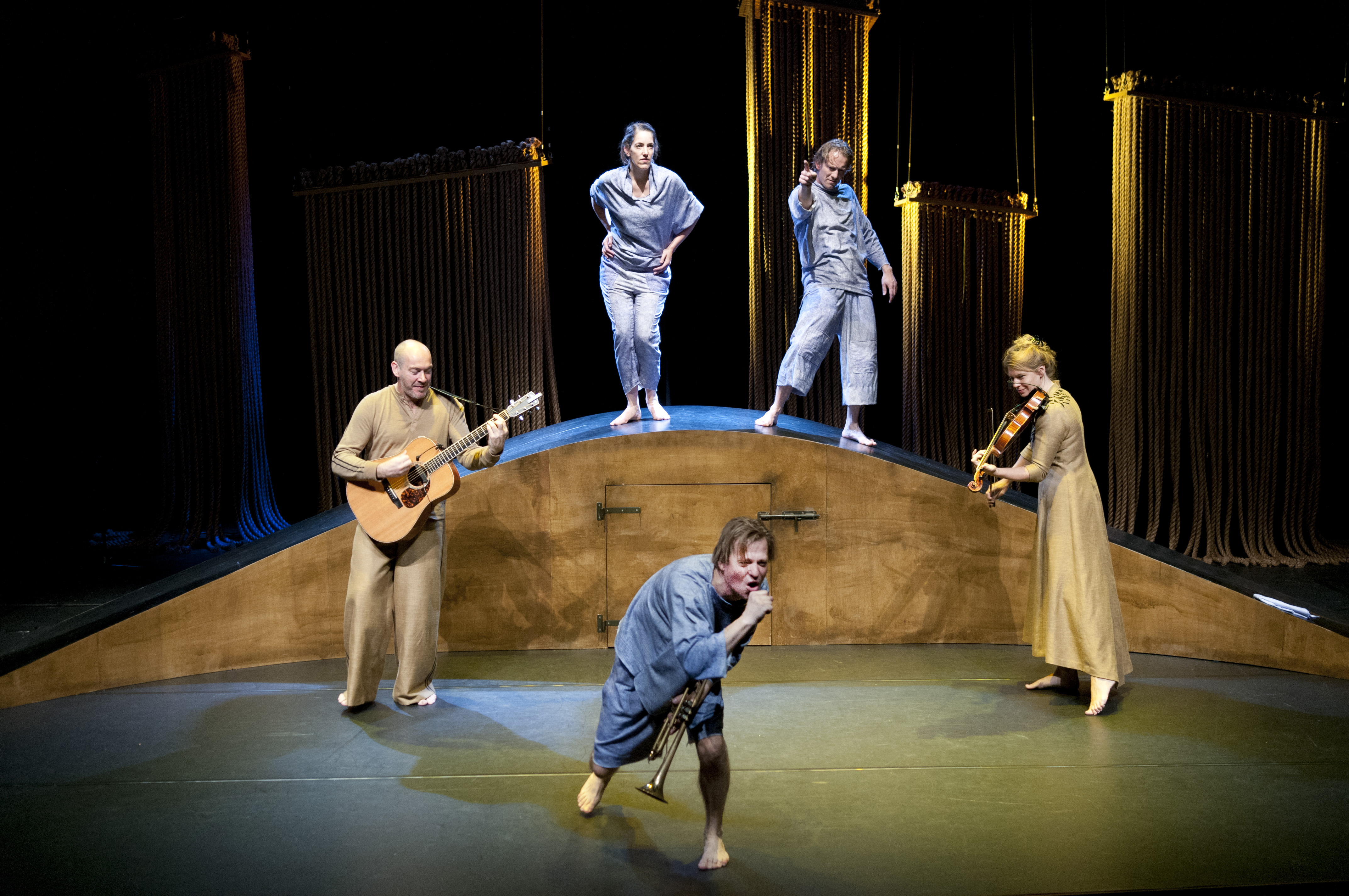
The striking thing about many classic fairytales is the often violent and macabre nature of the stories that are told within them.
Gruesome and outlandish tales where death, destruction and magic all merge into one rollicking good tale that inspires fear and pleasure in equal measure.
Because for all their ghoulishness, read them aloud to a small child and you will see both delight and horror race across their tiny faces.
Tom Thumb is no exception in this tradition.
We are seated in the Theatre van t’Woord in the Amsterdam public library, waiting for the curtain to rise on a new production that is touring the country as part of the celebrations and events for children’s book week.
The past few days, in the run up to the show, I’ve been reading the story to Helena, to familiarise her with the tale.
Each evening we have settled into our comfortable armchair and marvelled at the resourceful little Tom Thumb as he steers his siblings through all manner of atrocious events. Unreliable parents, ghastly child eating giants, deep dark forests. No hurdle seems insurmountable for the clever and optimistic little Tom.
It took a good few readings before the gruesome aspects of the story were accepted for what they are – an exaggerated tale of woe, with a happy ending, thanks to the quick witted good nature of the hero, but the essential, almost innate appreciation of the story took hold and banished the initial repulsion and fear.
After a few days, when we read the story at home, Helena was more than happy to roar and chomp “Fee-Fi-Fo-Fum!” as she sniffed around her bed seeking out children to eat, while I cowered in mock horror in the armchair. Nothing, it would appear, is more delightful than a gruesome giant.
Here in the darkness of the theatre however, the awfulness of that image is multiplied and takes on a more sinister aspect.
Already you can sense the unease among the children in the audience as the lights dim and the music begins. I start to wonder if perhaps I haven’t made a mistake. That such a show is too intense for a five year old child.
Helena clutches my arm and looks up at me for support.
I try my best and point out the stage. It is bare, save for some ropes hanging from the ceiling, the outline of a small house in the background and a small wooden hill that sits centre stage.
“Is that the forest and the hills, do you think? Is that Tom’s house?”
Helena stares at the set and sees none of it. It is all too abstract and representational. The set needs to be filled with actors for any of the props to come to life and begin to make any sense.
She holds up her thumb.
“If he’s this small, how will we see him?”
Good point.
“Well, maybe he won’t be so small. Maybe we just have to imagine he is really, really small.”
I see the disappointment on her face. Clearly she was expecting to see a tiny little figure scuttling about the stage.
She hold up her thumb and wriggles it. Makes a squeaky voice.
“Like this you mean?”
And I have to appreciate her imagination. Tom Thumb, played by thumbs! How else would they do it!
“Well. Let’s wait and see shall we?”
The show today is a slight variation on the tale as it is most known. The “Het Filiaal” company have orphaned Tom from the outset and sent him out into the woods with only two siblings, as opposed to the original six.
Which makes sense given that there will only ever be three actors on stage at any one time, accompanied by the wonderful musicians, Saskia Meijs and Reint van den Brink.
Together this small troupe need to bring to life a whole host of characters and fill the stage with their presence. And they do so to marvellous effect.
The actors themselves are exceptionally vivid and physical when it comes to playing the lost children.
Stijn Westenende is very effective in his portrayal of the tiny Tom Thumb, his playful movements and use of a small rag as a comfort blanket somehow transforming him into a small, lost child. Even Helena believes him and understands he is Tom.
Arie Rustenburg puts in a mesmerising performance especially in the scenes when he is required to double up as characters – the father, the lost son, one of the giant’s children. His shift of voice across the stage and the seeming sleight of hand of his movements really does create the disorienting impression that there are more people on stage than the three actors.
For some of the kids in the audience the effect of this bombardment of characters and dialogue does seem to confusing and I hear many whispered questions in the audience as they struggle to follow what is happening. But at some point the questions cease and the young audience seems to settle into an understanding of what is going on on the stare.
Doubtless the physical action is something they need to interpret. The telling of the tale is unusual and definitely requires a level of concentration and imagination that would not be necessary where there more actors on stage or if the tale were being told on film.
So the silence that settles after ten minutes or so is very comforting. The kids are starting to get it. And what’s more they seem to be enjoying it. Cheering and sighing and oohing and ahhing at the right moments. Moving along with the story.
At one point Helena grips my arm tightly as the giant’s children run amok onstage. I look down at her to tell her it’s all okay, but she is riveted and her gaze never leaves the action on the stage. Totally absorbed.
And throughout the production the musical score of Gabor Tarjan is like an extra player on the stage. The musicians themselves walk freely across the stage at times and follow the story with their music, adding pace and drama and fear in equal measure. For me it the music lifted the whole production to a more intense level and added an element of imagination that I would be hard pressed to imagine could be captured in any other way. As the score picked up pace at one point, with Tom Thumb running across the fields wearing the giant’s magic boots, the score thumped and pounded through the auditorium and produced the sensation that we were actually running alongside little Tom, leap by leap, bound by bound. Quite magical.
At the end I was left correcting myself. My first thoughts had been that this production was simply too sophisticated for small kids. The set was too sparse, the actors too few, the music too intricate, the dialogue too advanced.
Thankfully Het Filiaal are more ambitious in their understanding of what kids can appreciate. They dared to tell the tale in all its gruesome glory and to tell it well, for young and old alike.
When I asked Helena what she thought of it, she replied.
“That was scary.”
“But did you like it?” I asked.
“Yeah. Can we go again?”
No better praise than that really, is there?
